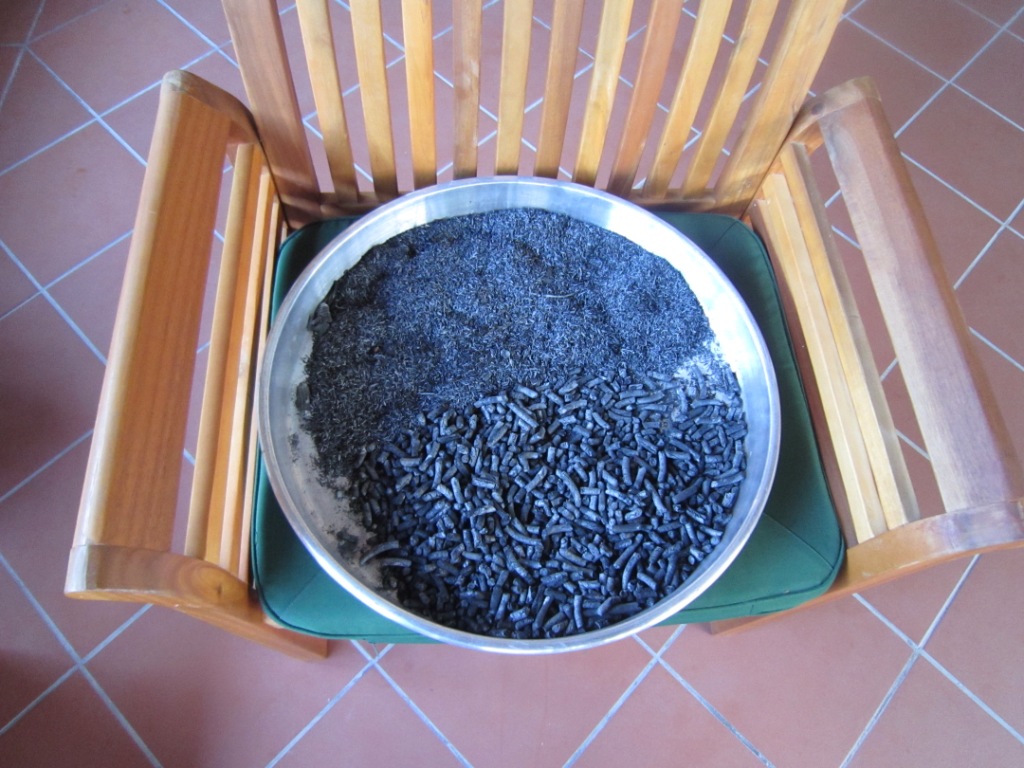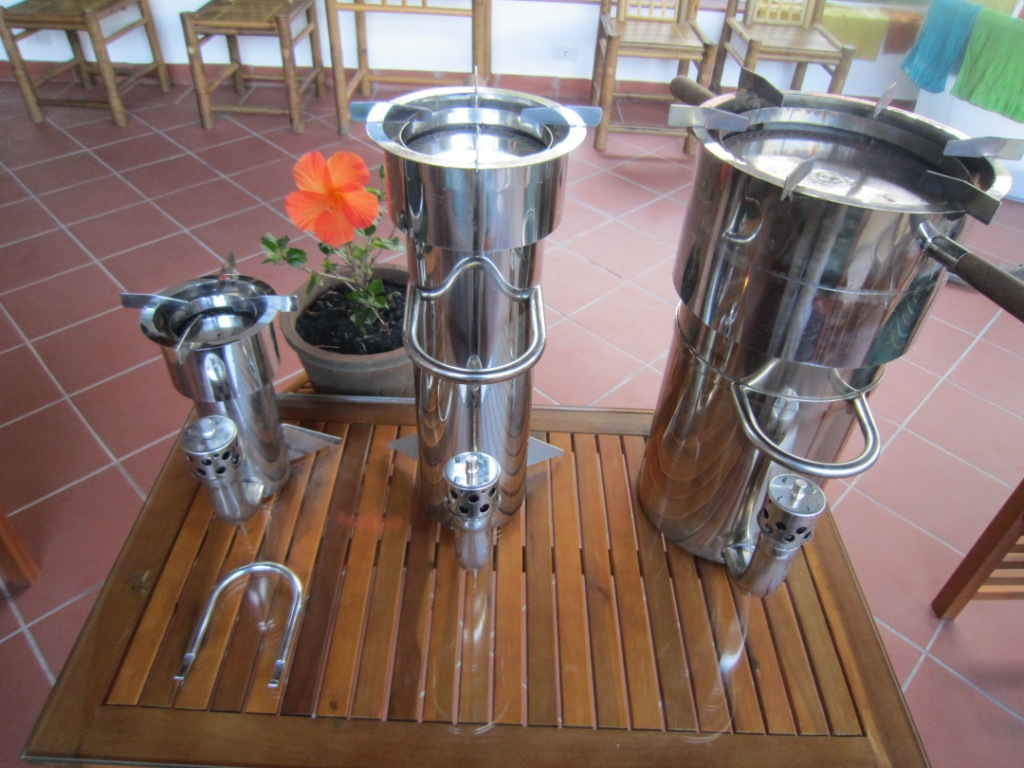Here you see all three gasifiers along with the biochar that they produce.
It is easy to imagine:
- biochar in feed for pigs, chickens and cattle and fish,
- biochar in bedding and litter,
- biochar in the substrate fed to BSF larvae and red worms,
- (biochar in vermi-compost),
- biochar under a biopod to soak up BSF leachate,
- biochar in suspension in shrimp and catfish pond water,
- (biochar in pond sludge),
- biochar loaded with nutrients from biodigestor effluent,
- biochar loaded with nutrients from human urine,
- biochar in the fecal chamber of a urine-diverting toilet,
- biochar in thermophilic and mesophilic compost,
- biochar in a potting soil mix,
- biochar to remove synthetic organic compounds from drinking water.
This list could go on and on. Biochar finally ends up in the soil where it remains for thousands of years. Since biochar always has a greater value than the loose biomass or pellets from which it is derived, high-grade heat is made available to households and businesses at a cost less than zero. The production of biochar remains highly decentralized - no dedicated and wasteful biochar kilns. When syngas replaces bottled gas in the production of high-grade heat, syngas has a greater value than biochar, and biochar, as valuable as it might be, becomes a by-product.
If we incorporate fresh biochar directly into the soil, we lose out on the many advantages and uses of biochar listed above. Biochar loaded and activated with nutrients and beneficial microbes should sell, in many cases, at a higher price than fresh biochar.
Thanks.
Paul
--
Paul A. Olivier PhD
26/5 Phu Dong Thien Vuong
Dalat
Vietnam
http://www.esrla.com/


